PhD CEOs & Deep-Tech Entrepreneurs: How to turn your LinkedIn Profile into a Powerful Client Generation and Conversion Engine that Scales your Business by Integrating the New Scientific Client Acquisition Model (OptimScale).
By Fabrice Abunde (ScientistMBA, PhD)

You might think that creating a LinkedIn profile and filling it out just like you would fill out a resume is enough to impress employers land you dream job offers.
Getting 5-10 Dream Job Offers via LinkedIn within 3 months involves the interplay between 3 core Engines: Demand Generation (DG) Engine, Demand Conversion (DC) Engine and Demand Fulfilment (DF) Engine, which constitute the Scientific Job Acquisition Model
- The DG Engine is used to make people view your LinkedIn Profile
- The DC Engine is used to convert LinkedIn Profile Views into Job Offers
- The DF Engine is used to convert job offers into dream job offers.
By dream job offers, I mean Jobs where you earn between $200k to $1M per year while enjoying a flexible work schedule and feeling fulfilled because you apply your PhD level knowledge or research discovery to help companies scale to significant profits.
If you face challenges getting your dream job offer via LinkedIn, it means at least one of the engines are not working properly: either the engine doesn’t exist, or it’s poorly configured.
So, to get dream job offers within 3 months, you must first understand that your LinkedIn profile doesn’t give you a dream job, but you can use your LinkedIn profile to get your dream job. While you think your LinkedIn profile is the final point to get you a dream job offer, it’s rather the starting point to generate views which need to be converted to job offers and then to dream job offers.
Engineering PhDs find it difficult getting their dream jobs via LinkedIn.
Despite having close to 1 billion active members and the fact that 87% of all employers and recruiters use LinkedIn for hiring, many Engineering PhDs still find it difficult getting their dream jobs via LinkedIn.
There is lack of detailed information on what strategies to use for LinkedIn success.
During a job search, Engineering PhDs portray themselves on LinkedIn as another “academic PhD,” or as another candidate searching for a job and salary to survive. This reveals that you don’t know the etiquette that governs professional online interactions as an Engineering PhD, and this negatively affects your job search.
To avoid blunders like these, I have put together this article to help Engineering PhDs like you understand how you can use LinkedIn to achieve your career goals.
Who is this Article For?
If you’re reading this article, there’s a good chance that you hold an Engineering PhD degree, and you’re unemployed, underpaid, or unsatisfied with the working conditions at your university or industry job.
- You’ve sent out several CVs to job applications but either get a rejection, no response or hear that you’re overqualified or underqualified for the job. When you get a job offer, the pay package (salary) is so low.
- Now you learned that jobs are gotten through networking sites like LinkedIn. So, you decided to create a professional LinkedIn profile. Afterwards, you started networking and contacting recruiters hoping to get a job. Still, you keep getting no reply and when you get a reply, it’s not a positive one.
- After doing research, you learned that before you get a job, you need to add value. You started contacting professionals via LinkedIn messaging to add value to them but still never landed you a job.
I want you to know I’ve been where you are now and felt all the frustrations you feel. I have written this article just for you, to show you how to transform your LinkedIn profile into a trap for high-paying recruiters.
This article will help you see everything in the industry job market with a new perspective, which in turn, will better prepare you to position yourself in the job market and avoid the various errors that prevent you from getting a high-paying industry job.
Whether you’re: (1) a recent Engineering PhD Graduate with no work experience searching for a high-paying industry job; (2) An Engineering PhD Professional wanting to turn your routine and low paying industry job into a high-paying consultancy firm; or (3) An Engineering PhD Entrepreneur wanting to get new dream clients for your business, this article is for you.
The Big Secret about Getting Jobs via LinkedIn
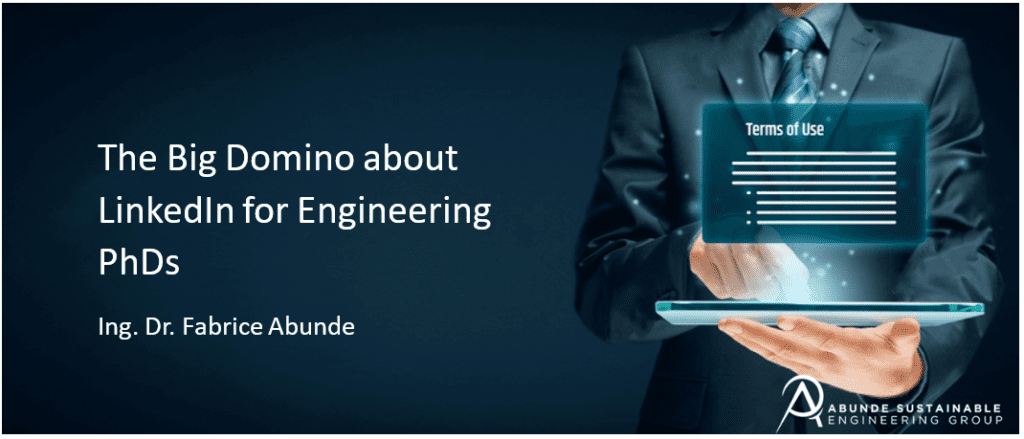

First, here’s the truth … you can get 5-10 Dream Job Offers via LinkedIn within 3 Months even If you have no industry work experience.
However, there has been no framework to help Engineering PhDs do so.
Everyone can create a profile on LinkedIn. LinkedIn gives everyone who creates a profile the possibility to generate profile views through connecting with others, viewing other profiles, making posts, or interacting with the posts of others, as well as editing your profile so you can appear on recruiter searches.
But what LinkedIn doesn’t give you is the ability to activate and convert your profile views into dream job offers.
So, if you find it difficult getting a dream job via LinkedIn, it’s caused by:
- Generation Problem: Your profile is not generating enough views and/or
- Conversion Problem: Your profile is not able to activate and convert views into job offers.
- Fulfilment Problem: You are not able to convert job offers to dream job offers.
The big idea is this… getting your dream job using LinkedIn is not just about generating profile views but about having a system that converts these views into dream job offers.
Consequently, Engineering PhDs fail to get their dream jobs via LinkedIn not because they aren’t good at what they do, but because they either don’t have enough profile views, or they lack a system (model) to automatically convert profile views into dream job offers.
Simply put, LinkedIn doesn’t give you a dream job, but you use LinkedIn to get a dream job.
How I discovered the LinkedIn Job Acquisition Model.
For those of you who don’t know me, my name is Fabrice Abunde (PhD), an Engineering PhD like you. A few years ago, I wanted to get my dream Job via LinkedIn. A job in which I am highly paid, for applying my PhD engineering skills and/or research discovery to solve practical business/industry challenges.
I looked everywhere for a strategy on how to do this, but I found nothing other than a few books & articles on LinkedIn networking, LinkedIn job search, how to edit LinkedIn profile, etc. All the different tactics I learned could help me get slight increase in my profile views, but none showed me how to convert the views into dream job offers.
I decided to take matters into my own hands and run a series of experiments to find the best strategies that could help an engineering PhD like me get my dream job offer via LinkedIn.
Then I discovered the OptimScale, the New Scientific Job Acquisition Model that I could just install on my LinkedIn profile to achieve 3 things: (1) Increase number of profile views, and (2) Convert profile views into dream job offers; and (3) Convert job offers to dream job offers.
My strategy worked so well, that I now earn 4 times the pay of average Engineering PhDs by working with different companies to help them scale. First, within 3 months working with a water Tech Group, I brought in over $100k using my research approach.
I went on to scale 2 other companies within 12 months: one in the developed world to over $1M in Annual Recurrent Revenue and one in developing world to over $250k all while being hilariously profitable.
Every other company wanted to employ me so that I could do the same for them and every Engineering PhD wanted to know how I managed to get dream jobs and scale companies just using process modeling and the scientific method (the OptimScale Framework)
To date, my OptimScale Framework has not only gotten me several dream jobs, but earned me board seats for several companies, invited speaker at leading companies, universities, and institutions, and breaking a world record for developing the first Model-Based Framework to get jobs and help the companies scale.
Now, I don’t share this with you to impress you, but to show you that it’s possible to get dream jobs via LinkedIn and earn upper 6 to 7 Figure Salaries by applying model-based engineering to help the companies scale. But you need the right framework to help you do so.
The Old vs New Approach to Search for Jobs on LinkedIn
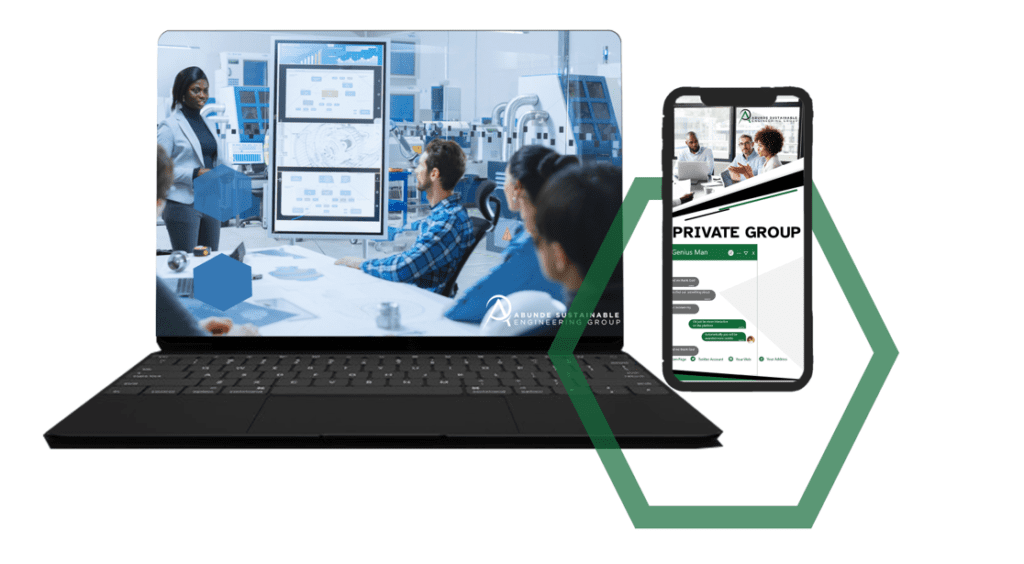

Before I show you how it all works, I want you to know high-paying PhD level jobs are not gotten using the same tactics as regular jobs. So, I’ll first show you some secret considerations.
The purpose of this section is to make you aware of what I learned, so that you have not only a fighting chance, but a great chance to win at getting your dream job via LinkedIn.
This section will open your third eye, as mine has been. To help you see things you could never see before, where you may be losing money or wasting time in your LinkedIn Job Search not knowing that you could make a fortune from it.
I will reveal the knowledge to you. Knowledge you are not supposed to have! Ready for it? Let’s get started.
If we assume there are a series of tasks required to get dream job offers via LinkedIn, then there is an optimal order in which those tasks should be conducted and an optimal approach by which each of the tasks should be executed.
So, for each task, I will show you the old approach and why it doesn’t work. Then I show you the new approach so you can better appreciate it. Now let’s move to the steps:
STEP 1: DECIDE ON HOW YOU WANT TO BRAND/POSITION YOURSELF ON LINKEDIN.
Old Method
In the old method of positioning yourself on LinkedIn you position as a job seeker (commodity). When you network you ask for jobs, when you make posts, you ask for jobs, when you message people, you ask for jobs.
You even add the open to work icon on their profile and activate currently searching for a job. We say, you position as a commodity because your profile mainly talks about your skills, certificates, experiences, and roles (e.g., Chemical Engineer, Mechanical Engineer, IT, Engineer, etc.). Several other job candidates will have similar profiles, nothing makes you stand out. You will find thousands of profiles with your same degree, same, skills and same experiences.
Nothing makes your profile unique to the person (potential recruiter) viewing it that’s why its just one commodity which can be compared with other commodities in the job market.
Old Result
When recruiters land on your profile, they see you just as another job candidate looking for a salary to survive. You appear poor and needy. Imagine holding an Engineering PhD degree and moving around asking for jobs. People expect value from you and not you are asking for value.
Also, when you position as such and get a job, it will usually be low or average pay. The jobs offered to job seekers always have a fixed salary range, which never gets to the upper 6 or 7 figure range.
New Method:
You position yourself as an Expert (Partner in Growth), who is ready to help companies scale in profits. When you network you ask for problems, when you make posts, you talk about company issues and possible solutions, when you message recruiters, you ask for problems they face that is preventing their business from growing.
New Result
When you use the problem-search approach, you identify unique opportunities void of competition. Every other candidate is searching for jobs so when you so, when you identify problems, you are already far ahead to getting a job.
When you network and ask people for problems they face, which is preventing them from scaling, you appear as a confident expert who has value to add. Also, when you identify company scaling problems, it has no salary attached to it. You can earn as high as possible depending on the level to which you help the company scale.
For instance, if you solve a scaling problem that earns a company $10M they will happily pay you $1M.
Bottomline
In the new global economy where everyone is striving for capital efficiency, employers generally don’t care how much you know until they know how much you care. When you search or ask for jobs, you appear as a poor and needy PhD just looking for a job to survive.
But when you ask for problems and express desire to help solve the problems, it positions you as a confident professional, which you truly are as an Engineering PhD.
If you were an industry recruiter on LinkedIn and have these two job candidates who both hold an Engineering PhD degree contact you, which of them will you want to hire?
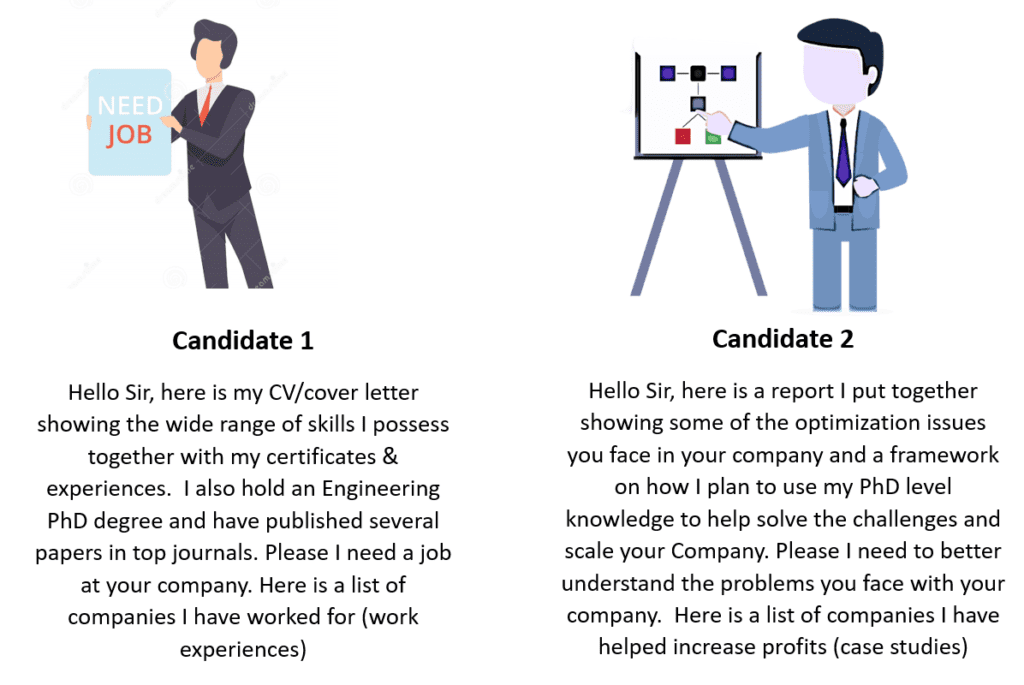

Candidate 2, I presume. That’s what I am talking about. This explains why most Engineering PhDs find it difficult getting an industry job, talk less of a high-paying industry job. The way you brand/position yourself on LinkedIn is key. Your profile should reflect you are ready to help companies scale and not ready to work.
STEP 2: DECIDE ON THE INDUSTRY SEGMENT YOU WANT TO WORK FOR. IN OTHER WORDS, DECIDE ON WHAT TYPES OF RECRUITERS YOU WANT TO ATTRACT.
Old Method
In the Old Method, your LinkedIn profile is not specific but targeted to all types of people. You just have job titles, skills, certificates, and experiences. Your goal is to attract a wide range of recruiters as possible. You don’t want to miss out on any chance.
We just see a group of roles/job titles under your profile photo directed to no specific person.
For example, look at these LinkedIn profiles. They just have a group of roles under their profile photo directed to no specific industry segment.


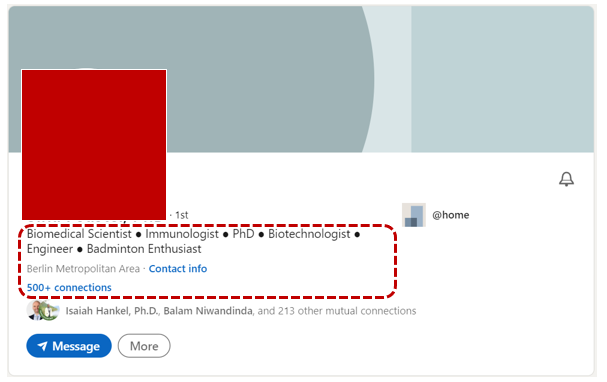

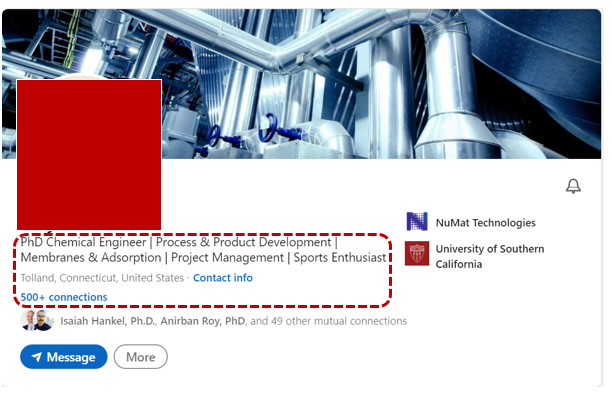

Old Results
When your LinkedIn profile is not targeted to a particular person, you will get low resonance from recruiters who land on your profile. So, views will rarely be converted into job offers.
In the case where you are using LinkedIn to get clients for your business, you will face the problem of low conversion due to low resonance between your profile and profile viewers.
New Method
In the new method, your profile is targeted to a very specific person of a specific industry segment. We see novel, new roles like:
- Biotech Growth Engineer. I help Biotech Company Founders 3x the number of drug discoveries and scale their profits.
- Chemical Growth Engineer. I help Cement manufacturing companies, reduce operating cost and scale in profits.
- Sales Development Representative. We help startups and internet-based service providers scale while being capital efficient.
- Water Efficiency Engineer: I help Brewery companies reduce production cost by improving water use efficiency.
You optimize your headline, cover photo, to target a specific industry segment. You include a clear call to action which links to your funnel.
For example, look at these profiles. They have job titles and a Value Specific Headline targeted at specific industry segments and/or people.
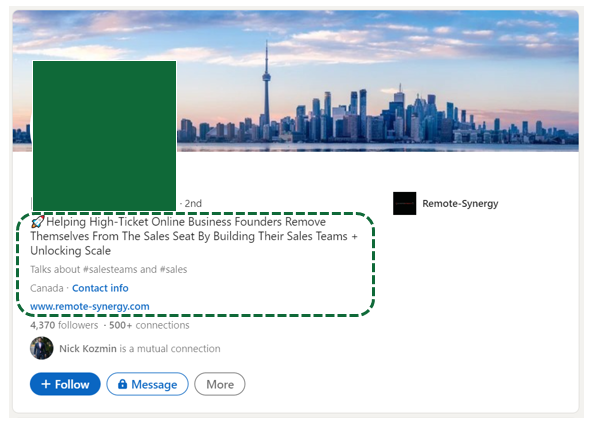

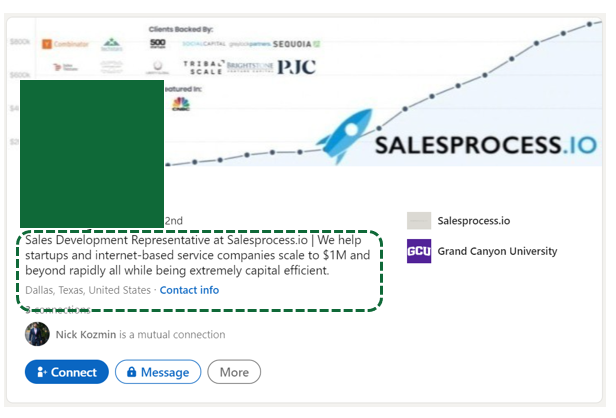

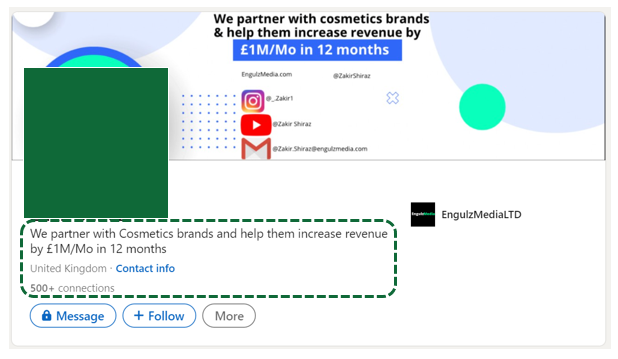

New Results
When your LinkedIn profile is targeted to a specific industry segment, you will get high resonance from recruiters who land on your profile. So, views will easily be converted into job offers.
In the case where you are using LinkedIn to get clients for your business, you will get extremely high conversion rates due to high market message resonance.
In the new global economy where everyone is striving for capital efficiency, employers generally don’t care how much you know until they know how much you care.
When you make your profile to focus on helping recruiters solve a given problem, and express desire to help solve the problems, it positions you as a confident professional, which you truly are as an Engineering PhD.
Bottomline:
In the Job Market, your goal is to increase the pressure (P) you apply in the market. Since there are several candidates having your same degree, skills, or qualifications, it means your Force (F) is fixed. You are limited.
So, the only way to increase the pressure you apply in the market is to reduce the size (A) of the industry segments you target since (P=F/A). The more specific you are the better.
Do not try to serve everyone. Just a specific industry segment and a specific problem within that industry that you know you can solve.
Improving energy efficiency, optimizing general manufacturing process, driving higher production rates, etc. Whatever you know can drive profits to the company.
STEP 3: DECIDE ON HOW YOU WANT TO GENERATE PROFILE VIEWS TARGET, MAKE PEOPLE KNOW ABOUT YOUR BUSINESS (SOURCE OF LEADS)
Old Method: Stochastic
In the old method of generating profile views, you leave everything to chance (you use the passive approach). You rely on the few referrals you could get from your LinkedIn connections.
You rely on LinkedIn algorithms to send recruiters to your profile. You activate the actively looking for a job and apply the open to work feature.
Old Results
You get low amount of profile views. The views come mostly from random people who come across your profile. People who are not even related to the industry segment you want to work in.
New Method: Deterministic
In the new method of generating profile views, you use the active, deterministic approach.
You actively make educative posts talking about the issues your chosen industry segment faces and how these issues can be solved, you contribute positively to posts of others, you view and endorse the profiles of those you’re interested in, you contact CEOs, Founders or R&D managers to ask them about the problems they face, you optimize your profile to appear in searches for the industry segments you are interested in. etc.
You sometimes even use LinkedIn promotion where you pay LinkedIn to send specific set people (CEOs, Founders or R&D managers) from your chosen industry segment to view your profile.
The promotion approach is highly efficient. If your profile is optimized as recommended at the end of this article, it can get you dream job offers within a few days.
New Results
Your profile views grow exponentially. You also get views from high-quality recruiters who work in the industry segment you want to work in. You get views from key decision makers affiliated to the industry segment you want to work in. You generate a constant stream recruiters and key decision makers who don’t only gain interest in you but also want to work with you.
Bottomline:
If you don’t have a deterministic system that consistently generates new views on your LinkedIn profile, then you are not serious about getting a job. You are on LinkedIn just as a hobby and not to get a job. In a world where everyone is in competition for job, you need to become intentional and use the right approaches if you want to get high-paying industry job via LinkedIn.
STEP 4: DECIDE WHAT YOU WANT PEOPLE TO DO WHEN THEY VIEW YOUR LINKEDIN PROFILE
Old Method:
In the old approach, when people view your profile, you want them to see that you are actively looking for a job and ready to start any time soon. You want them to see your skills, experiences, and certificates and message you to either offer you a job or request for your CV.
Old Result
Your value as an Engineering PhD greatly reduces. Profile viewers will rarely contact you. In the Job Market, people only want to work with those who provide value and not those who demand value.
When your profile shows you are demanding value, you appear as a beggar. It appears you are not a qualified candidate because if you are a qualified candidate, then you will not be looking for a job with your Engineering PhD degree. You will already have a job.
New Method:
In the new method, you want profile viewers to see that you are an expert and ready to help them solve their growth challenges. You first add value to recruiters. You add value by including a URL where they can download a free report (or video) you prepared to help solve their industry problems.
The report can be hosted on your website (preferably) or on YouTube and you just include the URL to the video or readable version of the report.
Wherever you host the content, also provide a link where they can book an appointment and talk with you. Let them know during this appointment, you want to better understand they specific business challenges and how you can adapt your approach to help them solve their challenges and scale their company.
This is why you need to first do your homework to understand the industry segment you want to apply for and the type of problems they face. Then you prepare a report where you analyse these issues and provide solution framework.
New Result
You have a constant stream of recruiters on your calendar waiting to talk with you and subsequently offer you a job.
Bottomline
When you focus your profile on convincing profile viewers for a job offer, you appear like many other candidates and your chances become very low but when you focus your profile on showing the recruiters how they can solve the problem they face, you appear unique, and the job will easily follow.
Always remember to add value before you request for value.
It’s just like Newtons third law of motion, which says to every action there is an equal but opposite reaction. If you want value first add value and you will get value in return but if you want to take value, value will be taken from you.
So, if you start by adding value to a company (doing your homework to identify their problem and prepare a diagnostic report on how the problem can be solved), you will get back value but if you focus on getting a job so you can earn a salary, you will rarely get value.
STEP 5: DECIDE ON HOW YOU WANT TO TALK AND CONVERT PROFILE VIEWERS TO OFFER YOU A JOB.
Old Method:
In the old method, you talk to everyone who views your profile and books an appointment to talk with you.
Old Result
The rate at which you get job offers might be slightly lower. You waste your time talking to potential recruiters (profile viewers) that end up not seeing a match between your skill set and their company.
You go for the interview not fully prepared because you don’t have specific information about the company where the profile viewer is coming from.
New Method:
In the new method, you first prequalify profile viewers. You make them go through a smart questionnaire where they answer some more specific questions about their company before they get access to talk with you.
Also, you want to be sure that the person you’ll be talking to is a key decision maker and works in the industry segment you are interested in. You also want to know if the company culture will match the type of job, you desire and if they have enough money in the bank to hire and pay and Engineering PhD like you.
New Result
You significantly increase your value Infront of recruiters. You gain what I call Status Delta. They see you as an expert and you already position yourself to command extremely high salaries.
You have prior information which you can use to better prepare yourself on the zoom or physical meet.
Bottomline
Visibility is always better than ability. You might be the best Engineering PhD but if recruiters can’t find you, you don’t get a job.
Also, when you start implementing this approach and generate large number of profile views, your calendar will be flooded with people wanting to talk with you. But you don’t want to waste your time talking to everyone. You want to only talk with people who you know can offer you your dream job.
This is especially important if you already have a busy job and looking to transition to a better pay job or if you’re a busy PhDCEO looking for clients but can’t devote your entire time talking to every interested profile viewer. That’s why you include a prequalification system.
All these boils down to 3-Actionable Steps


In summary, if you want to get 5-10 Dream Job Offers via LinkedIn within 3 Months even if you have no work experience, you need to take the following 3 steps.
Step 1: Install or Connect a Conversion System to you Profile to convert profile viewers into job offers.
Connect the perfect conversion engine into your LinkedIn profile to siphon off profile viewers and turn them into job offers. You do so by:
- Choosing an Industry Niche and Identifying the problems they face that is preventing them from scaling.
- Skilfully organizing and intelligently directing your skills to build a solution framework and a PDF Industry Report (also known as job search thesis or whitepaper) for solving the problem. Your report should analyse the issues, propose clear steps to solve the problem. You can do a Video explaining the report.
- Host the Video on a website (recommended) or YouTube and include a URL to a calendar where those who watch the video or read the report can book an appointment to talk with you.
Step 2: Optimize your LinkedIn Profile to Activate Recruiters who Land on It.
Now that you have the conversion system ready, you need optimize your profile such that it can activate profile viewers to enter your conversion engine.
OptimScale’s 5-Point Activation System turns your profile page into a powerful trap that "captures" recruiters and key decision makers in your chosen industry segment and activates them to enter your conversion system. The 5 Activation Points include:
- Including Logos of believable organizations on your cover photo to create status delta and increase your professional credibility.
- Including a Niche Specific headline that has a claim and a unique selling proposition that positions you as a Partner in Growth.
- Including a button or URL that leads viewers directly to your conversion system.
- Switching your profile to creator mode to get discovered, showcase content on your profile, and get access to creator tools.
- Converting your experience section into cases studies, which shows how you can help companies achieve their growth objectives.
- Including call to action to every post you make on LinkedIn that directs viewers to your conversion system.
Step 3: Generate Profile Viewers Organically
Now that you have your profile optimized to activate viewers and your conversion system ready to convert viewers to job offers, you need to install the engine that generate profile viewers.
OptimScale’s 5-Point Generation System turns your profile page into a powerful trap that "captures" recruiters and key decision makers in your chosen industry segment.
As install the generation engine, you’ll see visitors land on your profile page! Since your profile is optimized to activate profile viewers to enter your conversion system, you will instantly begin you see your calendar flooded with prospective recruiters.
The 5 Generation Points include:
- Profile Views: Viewing the profiles of recruiters or key decision makers who work at the company/industry segment you are interested in.
- Content Creation: Making interesting posts where you talk about the specific issues faced by your chosen industry segment and making recommendations on how the problem can be solved.
- Messaging: Sending personalized messages directly to the key decision makes in your interested companies where you first adding value to them, better understanding their challenges, and show them how you can be of help scale their company.
- Search Optimization: You optimize key words on your profile so that you can easily appear on the searches conducted by decision makers in your chosen industry segment.
- Promotion: You make use of LinkedIn promotion where you pay LinkedIn to send hundreds or even thousands of key decision makers (CEOs, Founders or R&D managers) from your chosen industry segment to view your profile.
How do you Get Started Now?
There are a couple of ways you can achieve this…
Option 1: You do it yourself.
Option one is to follow the 3 actionable steps to get 5-10 Dream Job Offers via LinkedIn within 3 Months by yourself and take the time to learn everything I have shown you. However:
- You will find it difficult to identify the right industry problem, which when solved will help the company scale to the millions. If the problem is wrongly identified, all the other steps will be irrelevant.
- It will take you so much time and many trials and errors to be able to organize your research idea/discovery to build a solution framework and an industry report (job search whitepaper) that clearly illustrates how you can solve the problem. This might end up frustrating you to giving up and returning to your old ways.
- Even if you get job offers, you might not know how to combine Model-Based engineering alongside your PhD level knowledge to scale the company to significant profits. Its only by doing so that you can earn between $200k to $1M per year. Other wise you only get the regular $70k to 100k salaries depending on the job description defined by the recruiter.
I know as engineering PhDs we are tough and can easily learn things faster. But if you try to research online, you’ll only find snippets of information. You can’t find a cohesive body of knowledge that can help you achieve this.
This means you might have to devote months or even years of research to be able to figure out everything by yourself. So, it’s possible trying to do it yourself but it will be painful, costly and time consuming.
Now because you have read this article up to this point, I know you are an Engineering PhD who really wants to succeed. So, I will provide you two other options to help you get started.
Option 2: Watch full training video here and take a quiz.
I have prepared a 2-hour free training video for you on how Engineering PhDs can use the Job Search Thesis to get jobs that pay 200k to 1M per year. The Job search thesis is part of my proprietary OptimScale Job Search Methodology exclusive for Engineering PhDs.
Option 3: Book a Free Industry Strategy Call here and talk to a Growth Specialist
On this call, I will help you figure out where you are now in terms of your industry job search and the steps you need to take to get a high-ticket industry job where you earn between $200k to $1M per year while enjoying a flexible work schedule and feeling fulfilled because you apply your PhD level knowledge or research discovery to help companies scale to significant profits.


Benefits of using the Job Market Formula
- Optimize your LinkedIn profile so that employers and recruiters start reaching out to you instead of the other way around.
- You take advantage of the hidden job market and referrals to speed up your job search.
- It’s not just a framework that you will use just when you are job hunting. It’s a system you will need at every step of you career.
- The framework will aid you whether you are conducting a job search, looking for clients for your business, boosting your professional reputation, or staying up to date with trends in your industry.
Proofs to show that the Job Search Thesis Really Works
The OptimScale Startup Framework is not only used to launch a B2B business from your research discovery, but you can also use it to get a high-paying industry job where you apply your engineering knowledge to help companies scale.
Using this methodology, I now earn 4 times the pay of Engineering PhDs by working with different companies to help them scale.
First, within 3 months working with a water Tech Group, I brought in over $100k.
I went on to scale 2 other companies within 12 months: one in the developed world to over $1M in Annual Recurrent Revenue and one in developing world to over $250k all while being hilariously profitable.
Also, don’t just take me for my word. OptimScale is built on my proprietary modeling framework for system scale up that been vetted and recognized by some of the world’s greatest publishers and news agencies such as:


Also, others have made use of the same 4-step approach to earning millions of dollars by helping startups scale.
- Professor Steve Blank (USA) who scaled 8 startups to the billions of dollars,
- Russell Brunson (USA), worked with over 30,000 startups to help them scale to the millions.
- Sabri Suby (Australia) who generated over $1.33 billion scaling thousands of startups in over 215 different niches,
- Nick Kozmin (Canada) repeatedly scaled over 2000 tech startups to the millions,
And the list goes on……
If you need help on how to use your academic knowledge or research discovery to get a highly paid industry job, where you earn between $200k to $1M per year by using the New Process Modeling and the Scientific Scaling Method (OptimScale) to Help Companies Scale, even if you have No Industry Experience, then watch full training video here or book an Industry Strategy call here to talk with me or one of our growth specialists.
For Engineering PhDs:


Hi, I'm Fabrice Abunde, PhD
After 7 years of research, I discovered the OptimScale Methodology, that helps Engineering Masters/PhDs Earn between $200k to $1M per year using Process Modeling and the Scientific Scaling Method to Help Companies Scale, Even if you have no Industry Experience.
If you want a highly-paid industry job or consulting project where you apply your academic knowledge or research discovery to help industries grow, watch full training video on how to use OptimScale Method in doing so.
About the Author: Fabrice Abunde, PhD
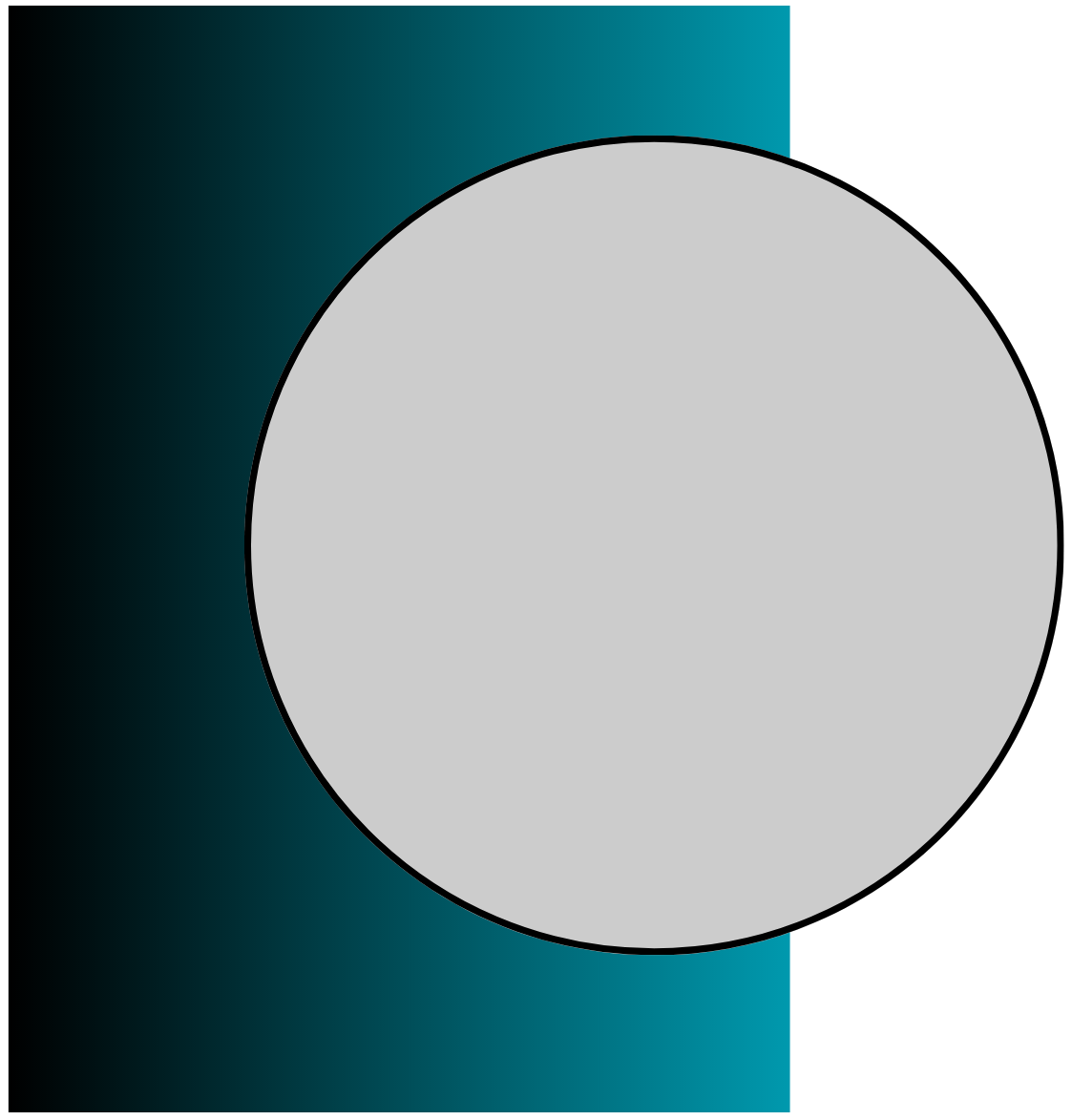

Fabrice Abunde


re are the most common results you'll get if you are trained and certified in the OptimScale Methodology. Here are the most common results you'll get if you are trained and certified in the OptimScale Methodology. Here are the most common r
re are the most common results you'll get if you are trained and certified in the OptimScale Methodology. Here are the most common results you'll get if you are trained and certified in the OptimScale Methodology. Here are the most common r
re are the most common results you'll get if you are trained and certified in the OptimScale Methodology. Here are the most common results you'll get if you are trained and certified in the OptimScale Methodology. Here are the most common r
re are the most common results you'll get if you are trained and certified in the OptimScale Methodology. Here are the most common results you'll get if you are trained and certified in the OptimScale Methodology. Here are the most common r
Similar Articles for you
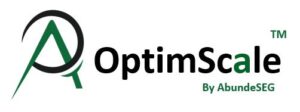



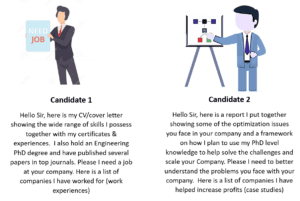

2 Reasons why using A CV/Resume Is Rather Killing your Industry Job Search: Engineering PhDs now use the Job Search Thesis to Get Hilariously High-Paying Jobs.
By Fabrice Abunde (PhD)
Engineering PhDs end up unemployed, underpaid or trapped in routine average pay industry jobs not because they aren’t good at what they do, but because they use the wrong approach and assets to search & apply for jobs.
As an Engineering PhD you can’t search & apply for an industry job the same way regular job candidates do. Getting a highly paid industry job at the PhD Level is not about having the best CV/Resume but about having a Job Search Concept that will differentiate you from other candidates in the job market and help recruiters see you as a partner in growth and not simply a candidate searching for a job and salary to survive.




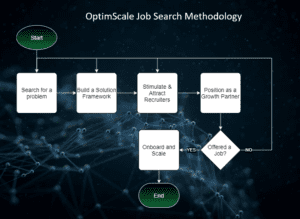

How I discovered the OptimScale Job Search Methodology that can help any Engineering PhD Transition to Industry and earn $200k to $1M per year
By Fabrice Abunde (PhD)
Consequently, Engineering PhDs end up underpaid in academia, unemployed or trapped in routine average pay industry jobs not because they aren’t good at what they do, but because they search, apply, and execute jobs, using the wrong approach and lack a Framework to translate their academic knowledge into measurable financial results for companies.
I realized that instead of starting a company or searching for a job to work for companies, Engineering PhDs can now use the OptimScale Methodology to pair with startups, apply modeling, simulation, and optimization Framework to scale the startups to Millions-Dollar companies and earn a percentage of revenue.
Get the OptimScale white paper for Free.
Step-by-step guide on how to make $200k to 1M per year using the Process Modeling
and the Scientific Scaling Method to help Companies Grow.
Join other Engineering PhDs
Become a Respected and Highly-Paid Industry Consultant. Learn How to Apply the New Process Modeling and the Scientific Scaling Method to help Companies Grow
Copyright 2023 AbundeSEG. All rights reserved

